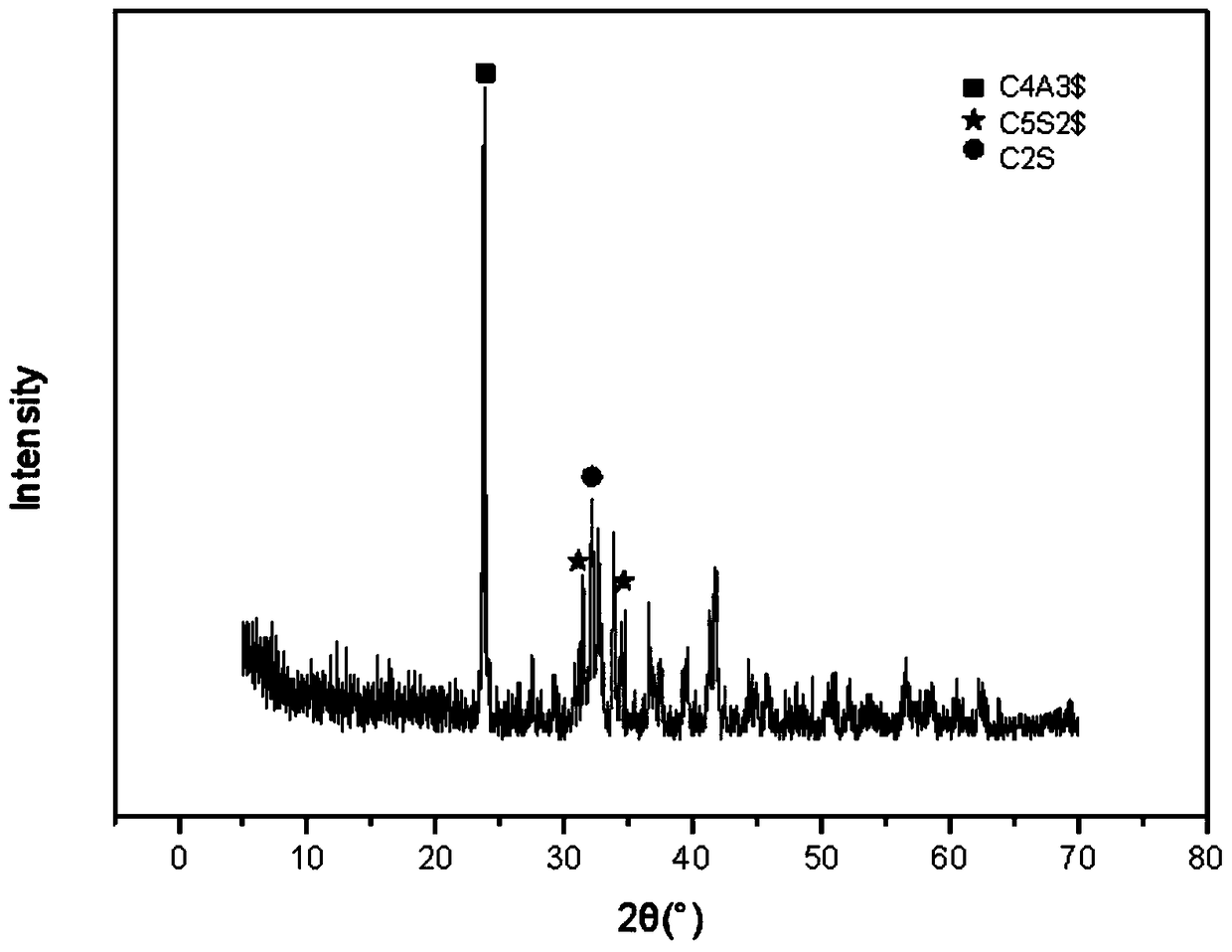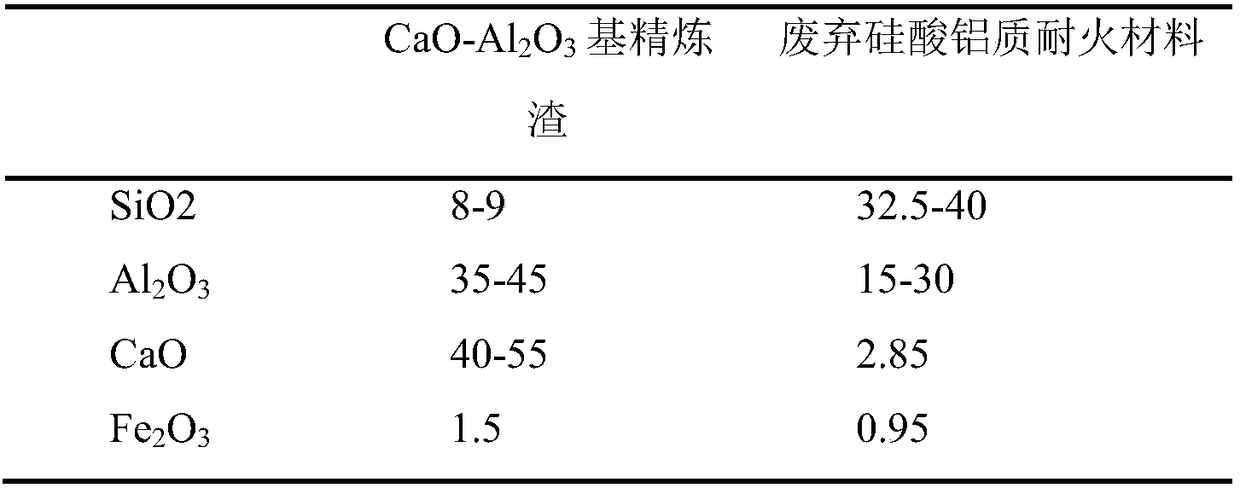Low-temperature preparation method of sulfur silicate-belite-sulphoaluminate cement
A technology of sulphoaluminate cement and sulphosilicate, which is applied in the field of materials, can solve problems such as complex procedures and high calcination temperature, achieve low energy consumption, low calcination temperature, and solve environmental problems
- Summary
- Abstract
- Description
- Claims
- Application Information
AI Technical Summary
Problems solved by technology
Method used
Image
Examples
preparation example Construction
[0026] A low-temperature preparation method of sulfosilicate-belite-sulfoaluminate cement of the present invention comprises the following steps:
[0027] (1) Put the raw materials into a planetary ball mill to mix and finely grind them; wherein, the raw materials include aluminum-silicon raw materials, aluminum raw materials, calcium raw materials, silicon raw materials, and industrial gypsum; the mass ratio of raw materials is: aluminum-silicon Raw materials: Aluminum raw materials: Calcium raw materials: Silicon raw materials: Industrial gypsum = 18.23~24.56: 6.09~23.76: 35.86~51.56: 11.23~12.47: 6.72~12.91; Among them, aluminum silicon raw materials waste aluminum silicate refractories , aluminum raw materials are bauxite, high alumina cement, CaO-Al 2 o 3 One of the base refining slags, the calcareous raw material is limestone, the silicon raw material is coal gangue, and the industrial gypsum is desulfurized gypsum and other industrial waste gypsum.
[0028] (2) Press ...
Embodiment 1
[0036] The ratio of raw materials is as shown in Table 2:
[0037] Table 2 Embodiment 1 raw material proportioning
[0038]
[0039] Specific steps are as follows:
[0040] 1) Mixing: Weigh the raw materials according to the mass ratio in Table 2, place them in a planetary ball mill, grind for 120min, and press them into cakes under a pressure of 6MPa;
[0041] 2) Calcination: place the product of step 1) in a high-temperature electric furnace, heat up to 700°C, keep it warm for 3 hours, and then cool it rapidly;
[0042] 3) Sieve: Grind until the particles can all pass through a square hole sieve with a pore size of 80 μm, and perform an XRD test, such as figure 1 .
Embodiment 2
[0044] The ratio of raw materials is as shown in Table 3:
[0045] Table 3 Embodiment 2 raw material proportioning
[0046]
[0047] Specific steps are as follows:
[0048] 1) Mixing: Weigh the raw materials according to the mass ratio in Table 3, place them in a planetary ball mill, grind for 60 minutes, and press them into cakes under a pressure of 6 MPa;
[0049] 2) Calcination: after crushing the cooled block sample, place it in a high-temperature furnace, calcine and keep it warm at 950°C for 2 hours, take it out for rapid cooling, and grind it in a ball mill to obtain sulphoaluminate cement clinker;
[0050] 3) Strength test: Mix and grind clinker and dihydrate gypsum to make cement, and perform 3d, 28d flexural, compressive, and flexural strength performance tests, as shown in Table 4.
[0051] Table 4 Example 2 Strength Performance Test
[0052]
PUM
 Login to View More
Login to View More Abstract
Description
Claims
Application Information
 Login to View More
Login to View More - R&D
- Intellectual Property
- Life Sciences
- Materials
- Tech Scout
- Unparalleled Data Quality
- Higher Quality Content
- 60% Fewer Hallucinations
Browse by: Latest US Patents, China's latest patents, Technical Efficacy Thesaurus, Application Domain, Technology Topic, Popular Technical Reports.
© 2025 PatSnap. All rights reserved.Legal|Privacy policy|Modern Slavery Act Transparency Statement|Sitemap|About US| Contact US: help@patsnap.com



